EAZA News
News, announcements, updates and vacancies from the EAZA Executive Office and the wider EAZA community.
You can have new stories delivered directly to you by subscribing to the RSS feed for this blog.
For information on upcoming events please visit the events calendar.
For job opportunities please visit the Vacancies page
Launching the EU AHL Guidance Handbook
15 March 2024: We are happy to launch the EU Animal Health Law (AHL) Guidance Handbook!
Resulting from the joint work of EAZA and the European Association of Zoo and Wildlife Veterinarians (EAZWV), in collaboration with the European Association of State Veterinary Officers, the handbook clarifies how the EU AHL applies to zoos and aquariums. It aims to help veterinarians and zoo professionals in charge of animal health, and those responsible for AHL implementation.
You can find the document here and get some insights from the main authors in Zooquaria 121 (page 24).
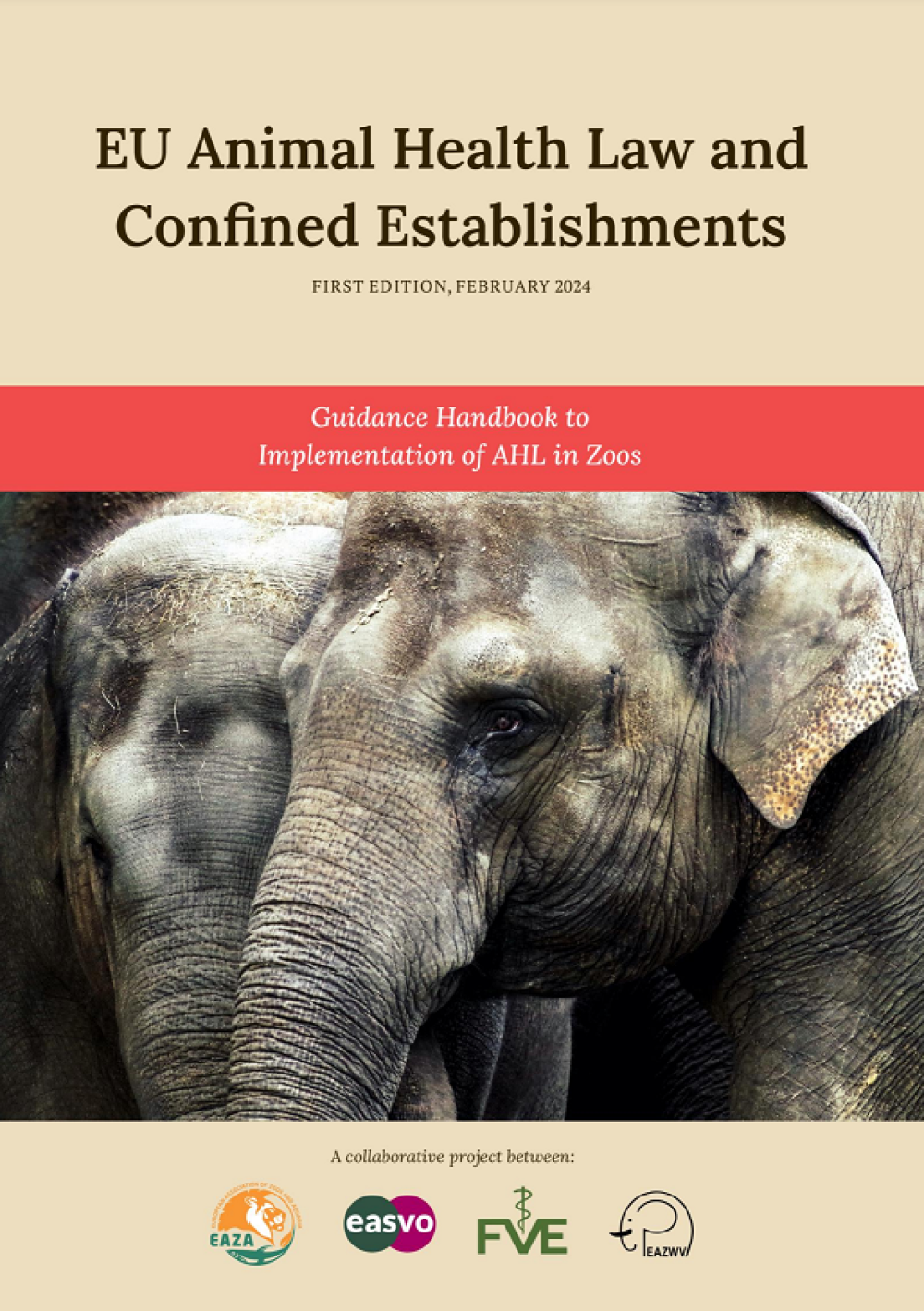
EAZA welcomes the new IUCN SCC Position Statement
11 October 2023: EAZA welcomes the Position Statement on the role of botanic gardens, aquariums, and zoos in species conservation just released by the Species Survival Commission (SSC) of the International Union for Conservation of Nature (IUCN). Read our full statement here.
EAZA celebrates the Lifetime Achievement Awardees
29 September 2023: During the EAZA Annual Conference 2023, EAZA Chair Endre Papp honored two key figures of the zoo and aquarium community for their significant contribution to our association and to safeguarding species.
We congratulate once again the recipients of the EAZA Lifetime Achievement Awards 2023:
Guna Vītola, Animal Collection Manager at Riga Zoo. Guna is a biologist and zoo management professional who has been working at Riga Zoo for almost 30 years and as an active member involved in many areas of EAZA activities for more than two decades. “The zoo and animals are not just a work for Guna. It is her passion and mission to ensure high level animal welfare according to the latest research and expert recommendations, as well as to raise educated generations of zoo staff and visitors”says a representative of the zoo.
Lorenzo von Fersen, Curator for Research and Conservation at Nuremberg Zoo. In addition to working at Nuremberg Zoo since the 1990‘s, Lorenzo has founded the NGO Yaqu Pacha dedicated to conservation and research of aquatic mammals in Latin America. He is the EEP Coordinator for manatees and has published dozens of scientific papers, from cognition and bioacoustics, to animal welfare and conservation. One of his biggest achievements was to bring together scientists from all over South America to work together for conservation.
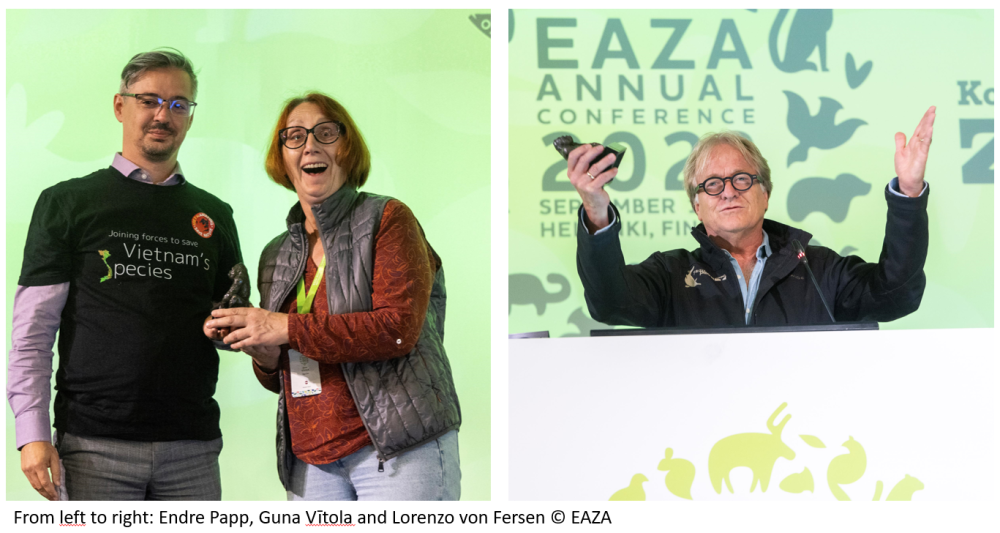
EAZA's contribution to vital research on ASF
28 September 2023: At the request of the IUCN Species Survival Commission’s Wild Pig Specialist Group, EAZA and its Members are contributing to an international research project on the African Swine Fever (ASF). This fast-spreading virus is threatening pig species in the wild and in human care, due to the lack of a vaccine or an effective treatment. Please find more information about the project here.
EAZA Statement on Furuviksparken
20 December 2022: We were saddened to learn last week about the escape of chimpanzees at Furuviksparken, an EAZA Member, which led to the death of four animals. EAZA, along with the team at Furuviksparken and our colleagues at the Swedish Zoo Association (SDF), takes this situation very seriously. We underline the need for a fair, transparent and fact-based investigation, necessary for gaining clarity about this incident and for preventing such incidents from occurring again. Read our full statement here.
EAZA updated Statement on the war: 8 December 2022
EAZA has updated its statement from March 2022 regarding the war in Ukraine, and its Ukrainian and Russian Members. You can read the full statement here.
EAZA terminates membership of Al Ain
The EAZA membership of Al Ain Zoo in the UAE will be terminated by decision of EAZA Council. Here is the full statement
Update on Ukrainian Zoos - 3 June 2022
EAZA has issued a further update on the situation for zoos in Ukraine, and the fund we have established to support them during the crisis. You can read the statement here.
New BPGs for Jaguar
We are pleased to announce the publication of the Best Practice Guidelines for Jaguar (Pantera onca)
Update on Ukrainian Zoos 22 April 22
EAZA has updated its information on the situation for Ukrainian zoos. You can read our update here.
Update on Ukrainian Zoos - 12 April
EAZA has issued a further update on the situation for zoos in Ukraine, and the fund we have established to support them during the crisis. You can read the statement here.
Update on Ukrainian zoos
EAZA has issued a further update on the situation for zoos in Ukraine, and the fund we have established to support them during the crisis. You can read the statement here
Update on Ukrainian zoos - 30 March
EAZA has issued a further update on the situation for zoos in Ukraine, and the fund we have established to support them during the crisis. You can read the statement here.
Rhino death in Rwanda
EAZA, African Parks and the Rwanda Development Board are sad to announce the death of one of the five rhinos reintroduced into the Akagera National Park last year. Our joint statement can be found here.
EAZA Statement on Culling during COVID19 crisis
EAZA has issued a statement in response to media inquiries about culling at Member zoos during the COVID-19 crisis. You can access the statement here.
EAZA COVID-19 Guidance Documents available
EAZA has issued guidance on the mitigation of negative economic impacts on population management and on best practice for reopening zoos and aquariums when permitted by local government.
New communications resources for reopening
EAZA has issued guidance on best practice for communications when reopening a zoo or aquarium.
EAZA joins Global Coalition for Biodiversity
EAZA has joined the Global Coalition for Biodiversity, an initiative of the European Commission to raise awareness of biodiversity loss and its devastating effects on the ecosystems of planet Earth. EAZA will work together with IPBES, science and natural history museums, botanic gardens, national parks and many other organisations specialising in public science engagement to give citizens the knowledge they need to demand greater action from governments. You can find our statement here
EAZA responds to the EU Biodiversity Strategy
EAZA welcomes the EU Biodiversity Strategy for 2030
as an ambitious plan for protecting nature and reversing the degradation of ecosystems in Europe and beyond.
Myfanwy Griffith, EAZA Executive Director, said: “EAZA zoos and aquariums have a unique skill set that makes them an ideal partner for the European Union to fulfill the objectives of this ambitious strategy. We look forward to playing a strong part in helping the Union and its Member States to set the pace for biodiversity protection and recovery over the coming years.”
With two thirds of EAZA Members based in the European Union, the policies of the EU – such as this Strategy – are an important reference framework for our activities and for the conservation partnerships we form and join. In the Position Statement, EAZA responds to the points that are most relevant to progressive zoos and aquariums; makes recommendations for the implementation of the Strategy and for the global negotiations and outlines areas in which the EAZA community has particular expertise to contribute.
We make the following five points:
1: Deliver on the ambition
Halting the decline of biodiversity requires deep economic, social, political and technological changes. Therefore, the success of the EU Strategy depends on whether the Member States and their partners actually turn it into action and build a strong global post-2020 biodiversity framework.
2: Make full use of the potential of progressive zoos and aquariums
Better implementation of the EU Zoos Directive can enable the EU Member States to raise the contribution of their zoos and aquariums to saving biodiversity both in Europe and globally.
Zoos and aquariums are mentioned in the Strategy for their role in raising public awareness about nature. Whilst a key task of the EAZA community, it is not the only one: our Members are dedicated to in situ and ex situ conservation, research and training. These are also the tasks required by the EU Zoos Directive.
3: Emphasise species conservation
The Strategy has an overarching goal of ‘putting biodiversity on the path to recovery by 2030’. We recommend that this also includes robust species conservation action, with clear and ambitious targets and increased attention to genetic diversity of wild species. Otherwise, species loss at current rates will eliminate the vital ecological and societal roles that the species fulfil.
4: Apply an integrated One Plan Approach to conservation
The potential of the ex situ community is often overlooked in species conservation; sometimes it is used at the last moment when it is too late to save a species. Instead, a whole portfolio of strategies should be considered for each species and applied simultaneously, proactively and early.
We recommend a broader use of IUCN’s One Plan Approach, which is also the guiding framework for EAZA’s joint population management. Its goal is the joint development of management strategies and conservation actions for all populations of a species, resulting in a single, comprehensive conservation plan.
5: Ensure that biodiversity is only used sustainably and legally
EAZA and its Members are committed to the fight against illegal and unsustainable wildlife trade and use. We encourage the EU to further strengthen its efforts in this area.
We welcome the pledge to minimise imported deforestation and to ensure that EU’s policies don’t contribute to biodiversity loss inside or outside the EU. We also welcome the EU’s commitment to One Health Approach, which recognizes the connection between human, animal and ecosystem health.
EAZA response to Russian elephant transfer
The European Association of Zoos and Aquaria has issued a statement condemning the transfer of an elephant calf from Rostov-on-Don Zoo to a circus. EAZA is in contact with the zoo and has called for the immediate return of the elephant from the circus. You can read the statement here
5 August 2020: EAZA Annual Reports 2019 are online
We are happy and proud to announce the EAZA Annual Report and EAZA Taxon Advisory Group Reports for 2019 are now available online.
They summarize the excellent work done by Members over the last year and bear witness to the dedication of staff members from across our community.
We thank everyone who contributed their time and expertise to make the achievements of the Association possible and who allowed us to fulfill our Strategic aims for the year.
Please download these documents and share them widely with your collaborators.
EAZA 2019 Conservation Database results
The EAZA Conservation Database results for 2019 have been released, with data included from 103 Members to date. You can see the results infographic here.
EAZA honours Dr. Miklos Persanyi
On the last day of its Annual Conference, EAZA honoured a retiring giant of the community, Dr. Miklos Persanyi. Here is our statement.
EAZA terminates Rostov-On-Don Candidacy
In the light of egregious breaches of EAZA Codes and Standards, EAZA has decided to terminate the Candidacy for Membership of Rostov-on-Don zoo in Russia. Our full statement can be found here
EAZA opposes French proposal on cetaceans
EAZA is firmly opposed to a proposal being placed before the French National Assembly tomorrow (8 Oct), which would have serious consequences for animal welfare, and France's capacity to contribute to cetacean conservation over the long term. You can read our full statement here.
EAZA welcomes WWF/TRAFFIC's report on tiger trade
EAZA welcomes the detailed report by WWF/TRAFFIC investigating tiger trade in the EU. It shows that 103 live tigers were directly exported from the EU and the UK between 2013–2017. The keeping of tigers in accredited and licensed zoos, such as EAZA Members’, is noted as being well regulated with institutions held accountable to high standards. Concerns are raised however, about inconsistences seen in the keeping and captive breeding of tigers by private persons, and associated difficulties monitoring whether live specimens or parts and derivatives from tigers are entering illegal trade.
The report calls on EU countries to gather and maintain comprehensive records of tigers held in all types of captive facilities, and cooperate with relevant organisations, such as EAZA and Species360, for best practices in developing such inventories. Further encouragement is given to collaborate with EAZA regarding the collection of DNA samples via the EAZA Biobank for law enforcement purposes. We stand ready to provide such scientific expert assistance.
This report also aligns strongly with the activities EAZA has been carrying out to protect tigers and reduce commercial trade. The EAZA Position Statement on European Commercial Trade in Tigers and Tiger Parts makes similar requests of the EU and offers ways to work together. Our IUCN Motion ‘Law enforcement regarding commercial trade in tigers and tiger parts’ is currently in the online voting process to become part of the global workplan of IUCN and its members going forwards. This Motion was developed with advice from TRAFFIC and a range of stakeholders and we encourage all IUCN members to vote in favour of it.
Bristol Zoo plans move to Wild Place Project
Bristol Zoo has made EAZA aware of plans to relocate to their Wild Place Project site in the coming years. You can read our statement of support here.
Update: Lion at Tehran Zoo
EAZA has had an update on the health of the male Asiatic lion at Tehran zoo, which is included in our latest statement
EAZA welcomes new Animal Health Law
EAZA welcomes the entry into force of the new Animal Health Law (Regulation 2016/429) and its associated acts, across the European Union. Read our statement about it.
EAZA welcomes UNEP Decade launch
EAZA welcomes the launch of the United Nations Decade on Ecosystem Restoration. You can read our statement here
Elephant Reintroductions
The EAZA Elephant TAG has released a position statement on the reintroduction of elephants of both species in human care
No current plans for EAZA cull of gorilla
EAZA has been made aware of an extremely misleading article presented in the UK media. We categorically refute allegations that we are planning an imminent cull of gorilla, and require a clarification by the publication. This is our statement
Happy Christmas and New Year
EAZA wishes all its Members, partners and zoo visitors a Merry Christmas and a Happy New Year. We'd like to thank everyone who helped zoos and aquariums to continue to thrive in 2021, and everyone of our friends who contributed to the cooperative work between EAZA Members this year. We'd like to pay tribute to everyone who helped produce our Regional Collection Plans and Long Term Management Plans, as well as everyone who lent their expertise to the production of Best Practice Guidelines and worked on EEPs.
We look forward to working with you again in 2022, and welcoming back visitors to our institutions. Happy New Year!
New BPGs
The EAZA Monotreme and Marsupial Taxon Advisory Group is proud to publish the Best Practice Guidelines for Yellow-footed rock wallaby.
EAZA statement on the war in Ukraine
EAZA has issued a statement regarding the war in Ukraine, and its Ukrainian and Russian Members. You can read the full statement here.
EAZA Update on Zoos in Ukraine
EAZA has been in regular contact with zoos in Ukraine, and is now issuing an update on the situation in the country, the care of animals on site, and the potential for evacuation of zoo animals. You can read the full statement here
EAZA Statement on import of African Elephant
EAZA has been informed of the import of wild caught African savannah elephant to the United Arab Emirates from Namibia, including to EAZA Member Al Ain Zoo. EAZA does not support this import and has issued a statement on the issue, which you can read here.
April 2017 _ Spanish version of Ecuadorian amazon
The EAZA Parrot TAG is proud to present the Spanish version of EAZA Best Practice Guidelines for Ecuadorian amazon. This version has been published in collaboration with the Latin American Zoo and Aquaria Association (ALPZA). This species is found only on the central and south west coast of Ecuador and is listed as Endangered on the IUCN Red List. The species is managed in human care as a European Endangered Species Breeding Programme (EEP) which acts as an insurance for the wild population. Ecuadorian Amazon parrots have been kept and bred well in human care for the last thirty years. These EAZA Best Practice Guidelines document methods for the successful husbandry of this species (and might also be useful for other amazon species). Recommendation boxes in this document highlight the important key points of each section, which readers should pay particular attention to. For questions, please contact Becca Biddle at b.biddle@chesterzoo.org.
EAZA Best Practice Guidelines are produced by the various TAGs to merge expert husbandry knowledge and make it widely available within and outside the borders of the EAZA community. The guidelines show best practice standards, which EAZA zoos aim at achieving. They have been compiled using a template and made user-friendly to facilitate reading and the finding of necessary information. The guidelines are of particular interest when building new enclosures, when deciding upon the nutrition of animals or when seeking information on the biology of the species. EAZA members strive to house animals adequately to their needs and to give advice where needed to help further animal welfare. Please also check out the other EAZA Best Practice Guidelines available and view the EAZA Standards for the Accommodation and Care of Animals in Zoos and Aquaria.
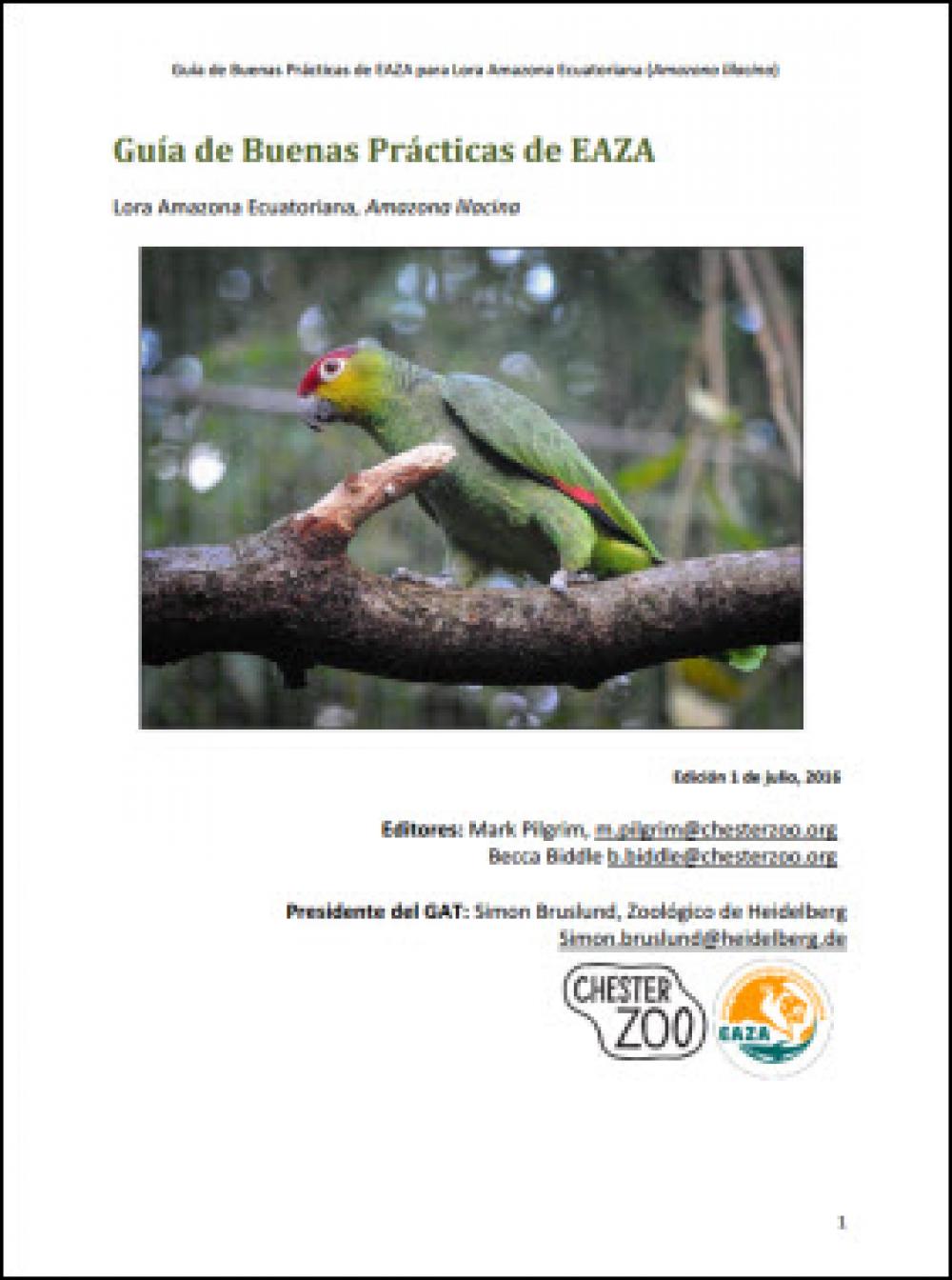
6 April 2017 _ EAZA Strategy 2017-2020
EAZA is proud to present the Association's strategy for 2017-2020, a progressive and ambitious document that strongly defines the role that good zoos do and should continue to play in:
- Supporting the work of the conservation community worldwide
- Caring for populations and individual animals to maximise their health and welfare
- Representing the interests of wildlife and ex situ conservation with legislators and other key stakeholders
- Communicating the values and scientific work carried out by our Members
We look forward to working with all our Members to fulfill this Strategy over the next four years. You can view the EAZA Strategy 2017-2020 on our website's Documents page, or by clicking here
21 July 2017 _ EAZA and Bialowieza protection
EAZA has released a statement in support of the EU's proposed legal action to force the Polish government to reinstate protection of the last primeval forest area in Europe. The Bialowieza forest has been opened up to commercial logging interests, putting the forest and its animals - including European bison - at extreme risk.
23 September 2017 _ EAZA launches Silent forest
The European Association of Zoos and Aquaria, together with TRAFFIC, BirdLife International and the IUCN Asian Songbird Trade Specialist Group, today launched a joint campaign in a collaborative effort to save iconic Asian songbird species from extinction.
The Silent Forest campaign will raise awareness of the devastating effects of the trade in songbirds across Southeast Asia, and will also raise funds for field conservation projects that are working to reverse the decline in numbers of some of the world’s most beautiful birds.Teetering on the brink of extinction, birds such as the Bali Myna and Javan Green Magpie are highly sought after in markets across the region. Owning a songbird has long been an integral part of Southeast Asian culture, but as the region develops, songbirds are fetching increasingly high prices in the markets, encouraging trappers to clear birds from huge areas of forest.
“The Asian songbird crisis has reached a tipping point: without immediate action, it is almost certain their voices will be silenced forever in the forest,” said Kanitha Krishnasamy, Acting Southeast Asia Regional Director of TRAFFIC, the world’s leading NGO on wildlife trafficking. We aim to raise the profile of this crisis both in Europe and in the range States and have a plan in place, in the form of a Conservation Strategy for these birds which this campaign feeds directly into. We need to establish a sustainable model that respects both local culture and laws without destroying the incredible richness of Southeast Asia’s biodiversity; that’s a formidable challenge, but this is a very strong coalition of partners, and there are some amazing projects that the campaign will support.”
Thomas Ouhel of Liberec Zoo, and Chair of the Campaign, pointed to the difference that funds raised by European zoos could make: “If we can persuade traders to work with conservationists and breeders rather than pillaging the forests, there’s a real chance to save these birds by changing attitudes towards the ownership of songbirds. Funding for the breeding and conservation projects, linked to educational work in the local communities can halt and eventually reverse the decline in songbirds species, bringing back the music of the forest for the benefit of future generations.”
Silent Forest will run for two years, and is aimed at raising €400,000 from European zoos and their visitors to help save six Critically Endangered flagship species identified by the coalition and the International Union for the Conservation of Nature (IUCN). Leading biologists from the EAZA and beyond will also work on scientific measures to increase protection for these species. To learn more, visit www.silentforest.eu
Further reading: TRAFFIC’s Conservation Strategy for Southeast Asian songbirds in trade: http://www.trafficj.org/publication/17_Conservation_Strategy_for_Southeast_Asian_Songbirds.pdf
For media inquiries, please contact David Williams-Mitchell, EAZA Communications Manager at:
Email: david.williams-mitchell@eaza.net
Tel: +31 655 683 625
About EAZA:
EAZA is a non-profit conservation organisation, with Members across Europe and the Middle East. Its mission is to facilitate cooperation within the European zoo and aquarium community towards the goals of public education and engagement, scientific research and nature conservation. EAZA believes that zoos and aquariums have a strong role to play in the conservation of nature and wildlife both at our Member institutions and out in the field, and believes that wild animals in human care are central to this mission.
EAZA is Europe’s key centre of excellence for scientific knowledge about wild animal welfare and management, and one of the continent’s foremost environmental education networks. With over 400 Members in 44 countries, out of which 26 are EU Member States, EAZA is the world’s largest regional zoo association and is represented in EU Member States through National Zoo Associations and individual zoos.
About TRAFFIC:
TRAFFIC, the wildlife trade monitoring network, is the leading non-governmental organization working globally on trade in wild animals and plants in the context of both biodiversity conservation and sustainable development.
TRAFFIC specializes in:
- Investigating and analysing wildlife trade trends, patterns, impacts and drivers to provide the leading knowledge base on trade in wild animals and plants;
- Informing, supporting and encouraging action by governments, individually and through inter-governmental cooperation to adopt, implement and enforce effective policies and laws;
- Providing information, encouragement and advice to the private sector on effective approaches to ensure that sourcing of wildlife uses sustainability standards and best practice;
- Developing insight into consumer attitudes and purchasing motivation and guiding the design of effective communication interventions aimed to dissuade purchasing of illicit wildlife goods.
About Birdlife International:
BirdLife International is a global partnership of conservation organisations (NGOs) that strives to conserve birds, their habitats and global biodiversity, working with people towards sustainability in the use of natural resources. Together we are 120 BirdLife Partners worldwide – one per country or territory – and growing.
We are driven by our belief that local people, working for nature in their own places but connected nationally and internationally through our global Partnership, are the key to sustaining all life on this planet. This unique local-to-global approach delivers high impact and long-term conservation for the benefit of nature and people.
BirdLife is widely recognised as the world leader in bird conservation. Rigorous science informed by practical feedback from projects on the ground in important sites and habitats enables us to implement successful conservation programmes for birds and all nature. Our actions are providing both practical and sustainable solutions significantly benefiting nature and people.
About IUCN Species Survival Commission: The IUCN Species Survival Commission (SSC) is a science-based network of more than 10,000 volunteer experts from almost every country of the world, all working together towards achieving the vision of, "A just world that values and conserves nature through positive action to reduce the loss of diversity of life on earth". Most members are deployed in more than 140 Specialist Groups, Red List Authorities, Task Forces and Sub-Committees. Some groups address conservation issues related to particular groups of plants, fungi or animals while others focus on topical issues, such as reintroduction of species into former habitats or wildlife health.

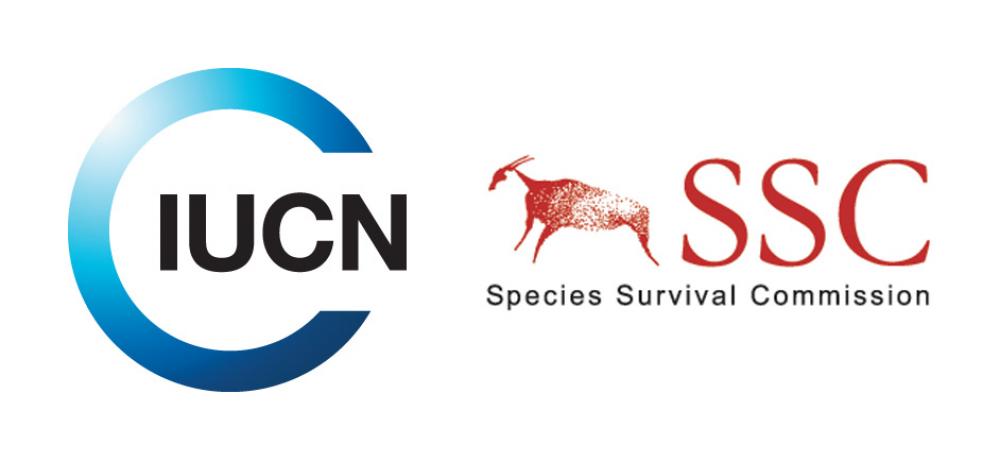
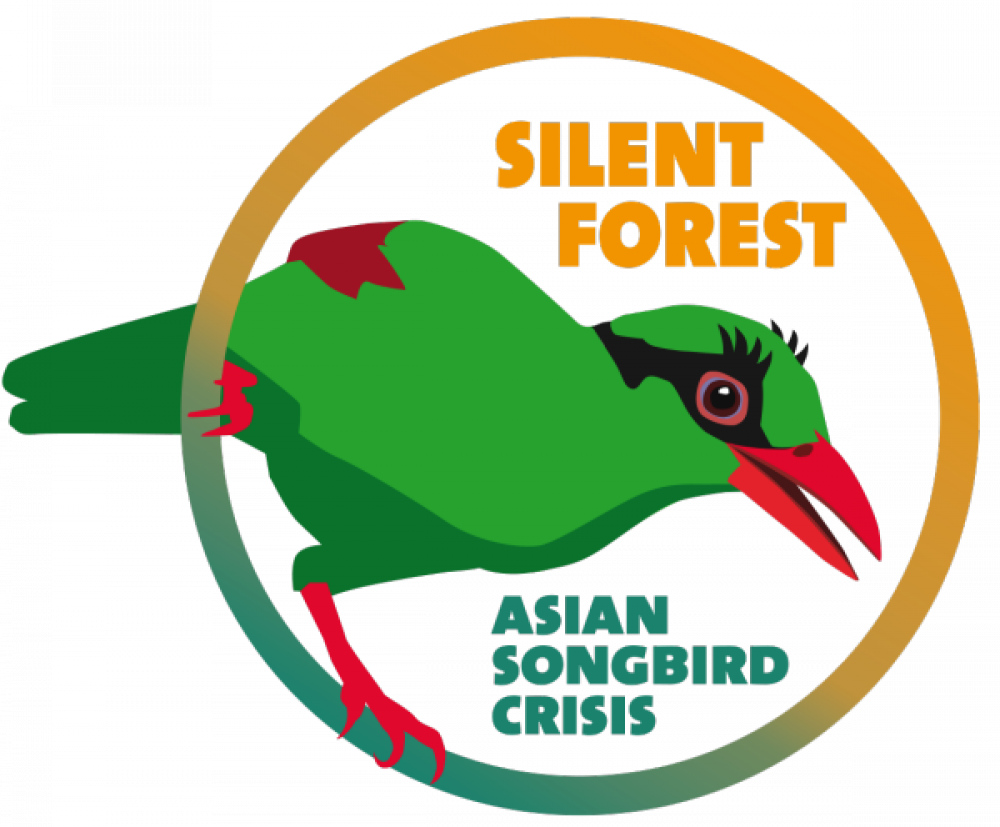
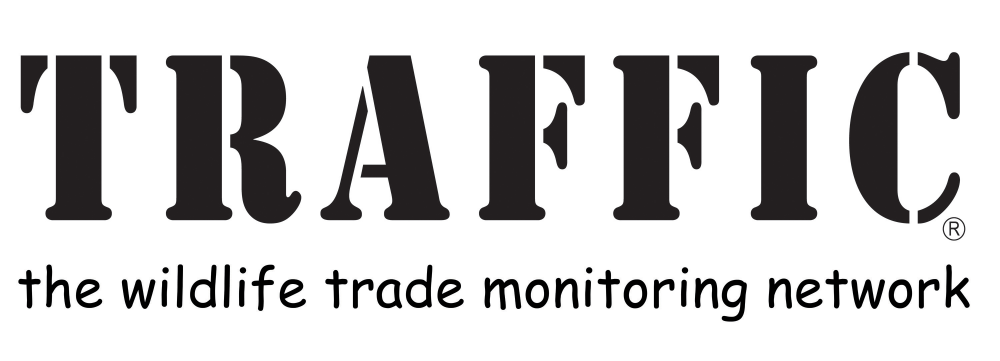
17 October 2017 _ EAZA signs MoU for Persian leopa
At a ceremony held at the 72nd Annual WAZA Conference in Berlin, EAZA signed a Memorandum of Understanding with the Russian Ministry of Natural Resources and the Environment (MNRE) and the Species Survival Commission of the International Union for the Conservation of Nature (IUCN SSC). The MoU assembles expertise and infrastructure to assist with the reestablishment of a sustainable population of Persian leopard in the Western Caucasus. You can read our statement by clicking here
30 Nov 2017 _ EAZA and VDZ at the European Union
EAZA and VdZ organised an event yesterday at the German Permanent Representation to the EU, to discuss the EU Zoos Directive. You can read the official statement by clicking here
18 Feb 2018 _ Best Practice Guidelines Turaco
The Toucan and Turaco TAG proudly presents the publication of the EAZA Best Practice Guidelines for Turacos (Musophagidae). Previously there were only guidelines for Red-crested turacos available, but these have now been expanded for all turaco species. The guidelines contain relevant and up to date information on current standards for turaco husbandry. Turaco species are in general very gratifying additions to our aviaries adding diversity, colour and character. They can be mixed with other species; an African themed exhibit would not be complete without the iconic turaco territorial calls and flash of red as they fly from perch to perch. To further optimize their well-being, you are encouraged to read or check the relevant paragraph in the new Best Practice Guidelines. For questions please contact Louis Peat.
Louis Peat: records@cotswoldwildlifepark.co.uk
EAZA Best Practice Guidelines are produced by the various TAGs to merge expert husbandry knowledge and make it widely available within and outside the borders of the EAZA community. The guidelines show best practice standards, which EAZA zoos aim at achieving. They have been compiled using a template and made user-friendly to facilitate reading and the finding of necessary information. The guidelines are of particular interest when building new enclosures, when deciding upon the nutrition of animals or when seeking information on the biology of the species. EAZA members strive to house animals adequately to their needs and to give advice where needed to help further animal welfare. Please also check out the other EAZA Best Practice Guidelines and view the EAZA Standards for the Accommodation and Care of Animals in Zoos and Aquaria.
19 February 2018 _ EAZA & TRAFFIC sign MoU
EAZA yesterday signed a Memorandum of Understanding with TRAFFIC, the world's leading NGO working to end the illegal trade in wildlife. Signed in support of the EAZA/TRAFFIC/BirdLife International/IUCN SSC campaign Silent Forest, the MoU commits the signatories to work together to end the unsustainable trade in endangered songbirds across the Southeast Asian region. You can read the full release here.
19 April 2018 _ Songbird statement
EAZA and its MoU partners for the Silent Forest campaign, namely BirdLife International, TRAFFIC, and the IUCN SSC Asian Songbird Trade Specialist Group, have released a position statement on the illegal trade in songbirds. Songbirds are an important commodity for criminals across the globe, with illegal sales in Europe and the Middle East as well as in more recognized wildlife crime hotspots. The statement calls for the improvement of enforcement of existing laws in the EU as part of the coalition's support for the EU Action Plan on wildlife crime, thorough vetting of facilities that hold songbirds (including private breeders and zoos), and legislative recognition of the damage caused to songbird species populations by the indiscriminate trade. In addition, the statement lays out the resources that EAZA and the coalition can bring to bear on the issues to support the EU with the mission to stamp out the unregulated and illegal trade in songbirds.
15 May 2018 _ Contacting EAZA
Following installation of a new phone system, you can now contact the EAZA office by phone. The phone number remains the same: +31 20 520 0750. Thank you for your understanding.
19 June 2018 _ New EEPs launched
EAZA has launched the first nine European Ex Situ Programmes (EEP) for the management of populations of canid (dog and hyena) species. The launch represents a step change in the way zoos undertake conservation, education and research, with every EEP defining the reasons for managing populations in support of elements of the zoo and aquarium mission. You can read more about the launch, and the rationale for the EEPs here.
6 July 2018 _ Bird demo guidelines Spanish
The Falconiformes and Strigiformes TAG is proud to publish the Spanish version of the EAZA Husbandry and Management Guidelines For Demonstration Birds. This version has been published in collaboration with the Latin American Zoo and Aquaria Association (ALPZA).
The guidelines are the TAG specific response on the more general EAZA guidelines on the use of animals in public demonstrations (2014). These Best Practice Guidelines were developed in order to manage the husbandry of “demonstration birds of prey” and factor in all aspects of management that optimise the welfare of the participating bird or species as well as the wellbeing of the broader animal collection and native wildlife in surrounding areas. To ascertain key information as to what species were kept for bird displays, how they were managed, and why they were included, input was collected and collated from EAZA member institutions recognised for their demonstrations with free flight birds or experience with displays, raining or zoo management. The guidelines are specifically approved as BPG for the species that fall under the umbrella of the Falconiformes and Strigiformes TAG, although there are also references to other species used in demonstrations.
2 August 2018 _ EAZA Statement on Thomas Cook
The travel company, Thomas Cook, recently announced that as of summer 2019 they will no longer sell trips to facilities that care for orcas (Orcinus orca). The European Association of Zoos and Aquaria (EAZA) Accredited Member, Loro Parque, Spain is one such facility that this news affects. Loro Parque has been successfully caring for orcas for over 12 years and has a wealth of experience meeting their welfare and management requirements. Loro Parque passed the rigorous, holistic, EAZA Accreditation that covers Standards on Animal Accommodation and Care, Conservation, Education and Research and, in addition, they recently achieved a 100% rating in a focused animal welfare audit as part of requirements laid down by Thomas Cook. Conservation research programs involving orca at the park have also contributed to the development of prototype devices that use vocalizations to aid open sea orca protection and welfare.
The announcement by Thomas Cook cites animal welfare as a driver for their decision however, they do not appear to have considered the proven high animal welfare record that Loro Parque has. It is also difficult to understand the motives of Thomas Cook whereby they require a facility to undergo a welfare audit and then disregard the results. EAZA encourages Thomas Cook to reconsider their decision, specifically as it relates to EAZA Accredited facilities like Loro Parque who, in addition, have passed the Thomas Cook welfare audit requirements.
EAZA’s Accreditation process and Standards are publicly available as part of our commitment to transparency and professionalism.
16 August 2018 _ New EAZA Best Practice Guidelines
Our Taxon Advisory Groups (TAGs) have been very busy lately!
We are proud to announce the publication of three new Best Practice Guidelines:
- the EAZA Best Practice Guidelines for De Brazza's monkeys (Cercopithecus neglectus) by the Old World Monkey TAG,
- the EAZA Best Practice Guidelines for Orangutans (Pongo species) by the Great Ape TAG,
- and the EAZA Best Practice Guidelines for Cheetahs (Acinonyx jubatus) by the Felid TAG.
EAZA Best Practice Guidelines are produced by the various TAGs to merge expert husbandry knowledge and make it widely available within and outside the borders of the EAZA community. The guidelines show best practice standards, which EAZA zoos aim at achieving. They have been compiled using a template and made user-friendly to facilitate reading and the finding of necessary information. The guidelines are of particular interest when building new enclosures, when deciding upon the nutrition of animals or when seeking information on the biology of the species. EAZA Members strive to house animals adequately to their needs and to give advice where needed to help further animal welfare. Please also check out the other EAZA Best Practice Guidelines and view the EAZA Standards for the Accommodation and Care of Animals in Zoos and Aquaria.
30 August 2018 _ Zooquaria 101 is out
The issue 101 of Zooquaria is out today!
Aiming at maintaining the highest care and population management standards as possible, our experts are constantly working on improved processes:
read about EAZA's BioBank, get updates from the new style Regional Collection Plan, have insights into the EAZA Accreditation Programme, review the latest conferences...
Discover Nausicaá - Centre National de la Mer's new facility and many more interesting topics!
5 Sept 2018 _ Manatee Best Practice Guidelines
The EAZA Marine mammal Taxon Advisory Group is proud to announce the publication of the Best Practice Guidelines for the Antillean manatee (Trichechus manatus manatus).
EAZA Best Practice Guidelines are produced by the various TAGs to merge expert husbandry knowledge and make it widely available within and outside the borders of the EAZA community. The guidelines show best practice standards, which EAZA zoos aim at achieving. They have been compiled using a template and made user-friendly to facilitate reading and the finding of necessary information. The guidelines are of particular interest when building new enclosures, when deciding upon the nutrition of animals or when seeking information on the biology of the species. EAZA Members strive to house animals adequately to their needs and to give advice where needed to help further animal welfare. Please also check out the other EAZA Best Practice Guidelines and view the EAZA Standards for the Accommodation and Care of Animals in Zoos and Aquaria.
12 Sept 2018 - Mangabey BPG
The EAZA Old World Monkey Taxon Advisory Group is proud to announce the publication of the Best Practice Guidelines for the Mangabey (Cercocebus spp., Lophocebus spp. and Rungwecebus spp.).
EAZA Best Practice Guidelines are produced by the various TAGs to merge expert husbandry knowledge and make it widely available within and outside the borders of the EAZA community. The guidelines show best practice standards, which EAZA zoos aim at achieving. They have been compiled using a template and made user-friendly to facilitate reading and the finding of necessary information. The guidelines are of particular interest when building new enclosures, when deciding upon the nutrition of animals or when seeking information on the biology of the species. EAZA Members strive to house animals adequately to their needs and to give advice where needed to help further animal welfare. Please also check out the other EAZA Best Practice Guidelines and view the EAZA Standards for the Accommodation and Care of Animals in Zoos and Aquaria.
4 Oct 2018 - White rhino BPG
The EAZA Rhinoceros Taxon Advisory Group is proud to announce the publication of the Best Practice Guidelines for the White rhinoceros (Ceratotherium simum).
EAZA Best Practice Guidelines are produced by the various TAGs to merge expert husbandry knowledge and make it widely available within and outside the borders of the EAZA community. The guidelines show best practice standards, which EAZA zoos aim at achieving. They have been compiled using a template and made user-friendly to facilitate reading and the finding of necessary information. The guidelines are of particular interest when building new enclosures, when deciding upon the nutrition of animals or when seeking information on the biology of the species. EAZA Members strive to house animals adequately to their needs and to give advice where needed to help further animal welfare. Please also check out the other EAZA Best Practice Guidelines and view the EAZA Standards for the Accommodation and Care of Animals in Zoos and Aquaria.
9 Oct 2018 - Desertas wolf spider BPG
The EAZA Terrestrial Invertebrate Taxon Advisory Group is proud to announce the publication of the Best Practice Guidelines for the Desertas wolf spider (Hogna ingens).
EAZA Best Practice Guidelines are produced by the various TAGs to merge expert husbandry knowledge and make it widely available within and outside the borders of the EAZA community. The guidelines show best practice standards, which EAZA zoos aim at achieving. They have been compiled using a template and made user-friendly to facilitate reading and the finding of necessary information. The guidelines are of particular interest when building new enclosures, when deciding upon the nutrition of animals or when seeking information on the biology of the species. EAZA Members strive to house animals adequately to their needs and to give advice where needed to help further animal welfare. Please also check out the other EAZA Best Practice Guidelines and view the EAZA Standards for the Accommodation and Care of Animals in Zoos and Aquaria.
24 Oct 2018 - Pinnipeds BPG
The EAZA Marine Mammal Taxon Advisory Group is proud to announce the publication of the Best Practice Guidelines for Pinnipeds (Otariidae and Phocidae). This document was produced in collaboration with in collaboration with the European Association for Aquatic Mammals.
EAZA Best Practice Guidelines are produced by the various TAGs to merge expert husbandry knowledge and make it widely available within and outside the borders of the EAZA community. The guidelines show best practice standards, which EAZA zoos aim at achieving. They have been compiled using a template and made user-friendly to facilitate reading and the finding of necessary information. The guidelines are of particular interest when building new enclosures, when deciding upon the nutrition of animals or when seeking information on the biology of the species. EAZA Members strive to house animals adequately to their needs and to give advice where needed to help further animal welfare. Please also check out the other EAZA Best Practice Guidelines and view the EAZA Standards for the Accommodation and Care of Animals in Zoos and Aquaria.
01 Nov 2018 - Burmese brow antlered deer BPG
The EAZA Deer Taxon Advisory Group is proud to announce the publication of the Best Practice Guidelines for Burmese brow antlered deer (Rucervus eldii thamin) - the very first BPG for this TAG. Congratulations!
EAZA Best Practice Guidelines are produced by the various TAGs to merge expert husbandry knowledge and make it widely available within and outside the borders of the EAZA community. The guidelines show best practice standards, which EAZA zoos aim at achieving. They have been compiled using a template and made user-friendly to facilitate reading and the finding of necessary information. The guidelines are of particular interest when building new enclosures, when deciding upon the nutrition of animals or when seeking information on the biology of the species. EAZA Members strive to house animals adequately to their needs and to give advice where needed to help further animal welfare. Please also check out the other EAZA Best Practice Guidelines and view the EAZA Standards for the Accommodation and Care of Animals in Zoos and Aquaria.
9 Nov 2018 - EU Zoos Directive review is complete
The European Commission has completed its review of the Zoos Directive 1999/22/EC. EAZA welcomes the findings of the report, which leaves the Directive unchanged, but provide recommendations for better implementation. To read the report visit the European Commission website. EAZA will review the report fully in the coming days and will report back to Members on the key findings via direct mailing.
12 Nov 2018 - EAZA Position Statement Tigers
EAZA has released a position statement on the illegal trade in tigers and tiger parts in Europe and beyond.
14 Nov 2018 - BPG Asiatic golden cat
The EAZA Felid Taxon Advisory Group is proud to announce the publication of the Best Practice Guidelines for Asiatic golden cat (Catopuma temminckii). Congratulations!
EAZA Best Practice Guidelines are produced by the various TAGs to merge expert husbandry knowledge and make it widely available within and outside the borders of the EAZA community. The guidelines show best practice standards, which EAZA zoos aim at achieving. They have been compiled using a template and made user-friendly to facilitate reading and the finding of necessary information. The guidelines are of particular interest when building new enclosures, when deciding upon the nutrition of animals or when seeking information on the biology of the species. EAZA Members strive to house animals adequately to their needs and to give advice where needed to help further animal welfare. Please also check out the other EAZA Best Practice Guidelines and view the EAZA Standards for the Accommodation and Care of Animals in Zoos and Aquaria.
20 Nov 2018 - Black rhinos reintroduction
EAZA Members are getting ready for a crucial conservation initiative!
We are thrilled to announce the first phase of an incredible reintroduction project has now been completed! Five Critically Endangered Eastern Black rhinos bred in three EAZA Zoos have arrived in Czech Republic, where they will get ready for their future plane journey bringing them to the Akagera National Park in Rwanda in 2019.
An amazing demonstration of international collaborative work and of conservationists’ commitment to the survival of animal species!
More information in the press release here.
23 Nov 2018 EU Zoos Directive Review: a response
EAZA has produced a response to the report of the review of the European Union Zoos Directive. Read it here.
25 November 2018 - Tiger statement in Czech
The EAZA Position Statement on the European commercial trade in tigers and tiger parts is now available in Czech.
18 December 2018 - EAZA Manifesto
In May 2019, elections to the European Parliament will be held in all EU Member States. EAZA has produced a Manifesto that outlines key policy areas of importance to EAZA. We encourage Members to use this document to initiate discussions with potential candidates and their parties. This is to increase the potential number of politicians in place who support our activities and can help guide policy work that influences how we run our institutions.
Bonobos at Wuppertal Zoo, Germany
Following public concern regarding the introduction of a young male bonobo to the group at Wuppertal, EAZA has produced an explanation of the facts of the case, including background on the procedure and the social behaviour of bonobos. You can read the statement here: EAZA statement on bonobos at Wuppertal Zoo
EAZA Open letter to Barcelona Municipal Council
The Municipal Council of Barcelona is currently considering proposals for changes to the city zoo. EAZA believes these changes will be catastrophic for the zoo's animals and its abilities to educate visitors and conduct conservation and research activities and urges the Council to reject the proposal on ethical and scientific grounds. We have therefore sent an open letter to Members of the Council, which you can read in English, Catalan, and Spanish.
2 April 2019 - Lesser kudu BPG
The EAZA Antelope and Giraffid Taxon Advisory Group is proud to announce the publication of its first Best Practice Guidelines for Lesser kudu (Tragelaphus imberbis). Congratulations!
EAZA Best Practice Guidelines are produced by the various TAGs to merge expert husbandry knowledge and make it widely available within and outside the borders of the EAZA community. The guidelines show best practice standards, which EAZA zoos aim at achieving. They have been compiled using a template and made user-friendly to facilitate reading and the finding of necessary information. The guidelines are of particular interest when building new enclosures, when deciding upon the nutrition of animals or when seeking information on the biology of the species. EAZA Members strive to house animals adequately to their needs and to give advice where needed to help further animal welfare. Please also check out the other EAZA Best Practice Guidelines and view the EAZA Standards for the Accommodation and Care of Animals in Zoos and Aquaria.
14 May 2019 EAZA Welfare Forum call for abstracts
The submission of scientific abstracts (presentations, workshops and posters) for the first EAZA Animal Welfare Forum - taking place in Apenheul Primate Park, the Netherlands, from 24 to 26 March 2020 - is now open!
The topic of your abstract should support the forum theme - ‘Bridging the Gap’ - bringing together animal welfare research and application, to improve evidence-based animal welfare best practice.
Please find all the information here and submit the abstract form to EAZA Animal Welfare Coordinator, Sally Binding, before 16 June 2019.
20 June 2019: Rhinos to Rwanda
Five Eastern black rhino are due to leave EAZA Member Dvur Kralove for reintroduction in Rwanda on Sunday - here is the release with details of the project:
#rhinostorwanda
15 May 2017 _ EAZA against Cetacean regulat
The European Association of Zoos and Aquaria has strong scientific grounds for opposing the recent ban on cetacean breeding introduced by the former French Minister of the Ecology. Read the full statement by clicking here
31 May 2017 _ BIAZA statement on UK licencing
Following press reports in the UK regarding DEFRA inspection reports, the British and Irish Association of Zoos and Aquariums (BIAZA) has published an excellent statement that EAZA supports wholeheartedly. You can read the blog post at BIAZA's webpage by clicking here.
1 July 2019: New Demonstration Guidelines
The EAZA Marine Mammal Taxon Advisory Group is proud to announce the publication of the EAZA Marine Mammal Demonstration and Public Interaction Guidelines. This document presents the guidelines of the European Association of Zoos and Aquaria (EAZA) for the use of Cetaceans, Pinnipeds and Sirenia in demonstrations and public interaction and is supplementary to the Standards for Accommodation and Care (2019).
16 July 2019: EAZA Annual Reports
We are happy and proud to announce the publication of the EAZA Committees’ and Taxon Advisory Groups’ Annual Reports for 2018! They summarize the missions and functioning of our community as well as the dedicated work and great achievements of EAZA Members, Committees, and TAG participants in 2018. Download them on www.eaza.net/about-us/eazadocuments/.
30 July 2019 Javan Green Magpie BPG
The EAZA Passeriformes Taxon Advisory Group is proud to announce the publication of the Best Practice Guidelines for the Javan Green Magpie (Cissa thalassina). Congratulations!
EAZA Best Practice Guidelines are produced by the various TAGs to merge expert husbandry knowledge and make it widely available within and outside the borders of the EAZA community. The guidelines show best practice standards, which EAZA zoos aim at achieving. They have been compiled using a template and made user-friendly to facilitate reading and the finding of necessary information. The guidelines are of particular interest when building new enclosures, when deciding upon the nutrition of animals or when seeking information on the biology of the species. EAZA Members strive to house animals adequately to their needs and to give advice where needed to help further animal welfare. Please also check out the other EAZA Best Practice Guidelines and view the EAZA Standards for the Accommodation and Care of Animals in Zoos and Aquaria.
20 August 2019 Mountain Chicken Frog BPG
The EAZA Amphibian Taxon Advisory Group is proud to announce the publication of the Best Practice Guidelines for the Mountain Chicken Frog (Leptodactylus fallax). Congratulations!
EAZA Best Practice Guidelines are produced by the various TAGs to merge expert husbandry knowledge and make it widely available within and outside the borders of the EAZA community. The guidelines show best practice standards, which EAZA zoos aim at achieving. They have been compiled using a template and made user-friendly to facilitate reading and the finding of necessary information. The guidelines are of particular interest when building new enclosures, when deciding upon the nutrition of animals or when seeking information on the biology of the species. EAZA Members strive to house animals adequately to their needs and to give advice where needed to help further animal welfare. Please also check out the other EAZA Best Practice Guidelines and view the EAZA Standards for the Accommodation and Care of Animals in Zoos and Aquaria.
EAZA Lifetime Achievement Awards 2019
At the recent EAZA Annual Conference, the Association presented three Lifetime Achievement Awards for outstanding service - FIND OUT MORE
EAZA Summary of Activities 2018-2019
EAZA Members and the Executive Office have been busy between September 2018 and September 2019. Here's a summary.
31 October 2019 New JZAR is out
The new issue of the Journal of Zoo and Aquarium Research is available and dedicated to the 20 years of zoo science that has been supported, facilitated and achieved thanks to the BIAZA Research Committee.
The articles showcase the diversity of zoo-based research: the impacts of visitors on animals, the impact of exhibit design on visitors, keeper opinions on great ape diets and much more.
Read it here and share!
Coronavirus statement
The EAZA Statement on the Coronavirus COVID-19 can be found here
Sale of Pont Scorff Zoo
EAZA has learned that an Animal Rights coalition aims to buy EAZA Member Pont-Scorff Zoo in France. Here is our Statement
Update: EAZA events and coronavirus (COVID-19)
Amsterdam, 12 March 2020
As you will be aware, the circumstances surrounding the spread of the COVID-19 virus and reactions to it across our region and globally are changing quickly, generating considerable uncertainty about travel and meetings. In the light of yesterday’s declaration of the virus as a global pandemic by the World Health Organisation, and in line with guidance from them and other sources, EAZA has made the difficult decision to cancel all Association events scheduled between now and the end of May.
While some countries are evidently more affected than others, we believe that continuing with the Animal Welfare Forum, Directors’ Days and the Conservation Forum, as well as other mid-year meetings of TAGs and Committees would add to the risk of both the host institutions and their cities, to the delegates themselves, and to their colleagues and communities.
We have been in contact with our hosts, and we intend to examine solutions that may allow elements of these meetings to proceed remotely by teleconference and will be in touch with delegates to provide details of how and when we will proceed with these activities. In some cases, events may be rescheduled for a later date – again, we will provide a full update when the situation becomes clearer. We are reviewing the costs so far incurred for these events and aim to ensure a fair sharing of the financial burden, meaning that in practice we will aim to provide the fullest refunds possible to delegates currently registered. We ask for your understanding and patience as we work out how to do this effectively and impartially and will contact delegates and speakers directly once we have assessed the details of each conference.
We thank you for your understanding and will endeavor to keep you updated as the situation evolves.
EAZA Executive Office - COVID-19 precautions
The Dutch government has issued advice that everyone in the country should aim to work from home if possible. The EAZA Executive Office will be following this advice, so you may not be able to reach anyone at the office by telephone until further notice. All functions of the office will continue, and if you need to contact a member of staff, please do so via their email address, or via info@eaza.net. We thank you for your understanding and will update you when the situation changes.

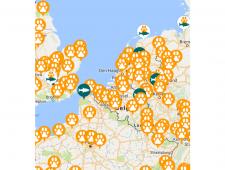
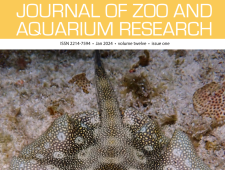
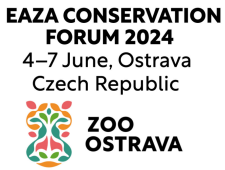
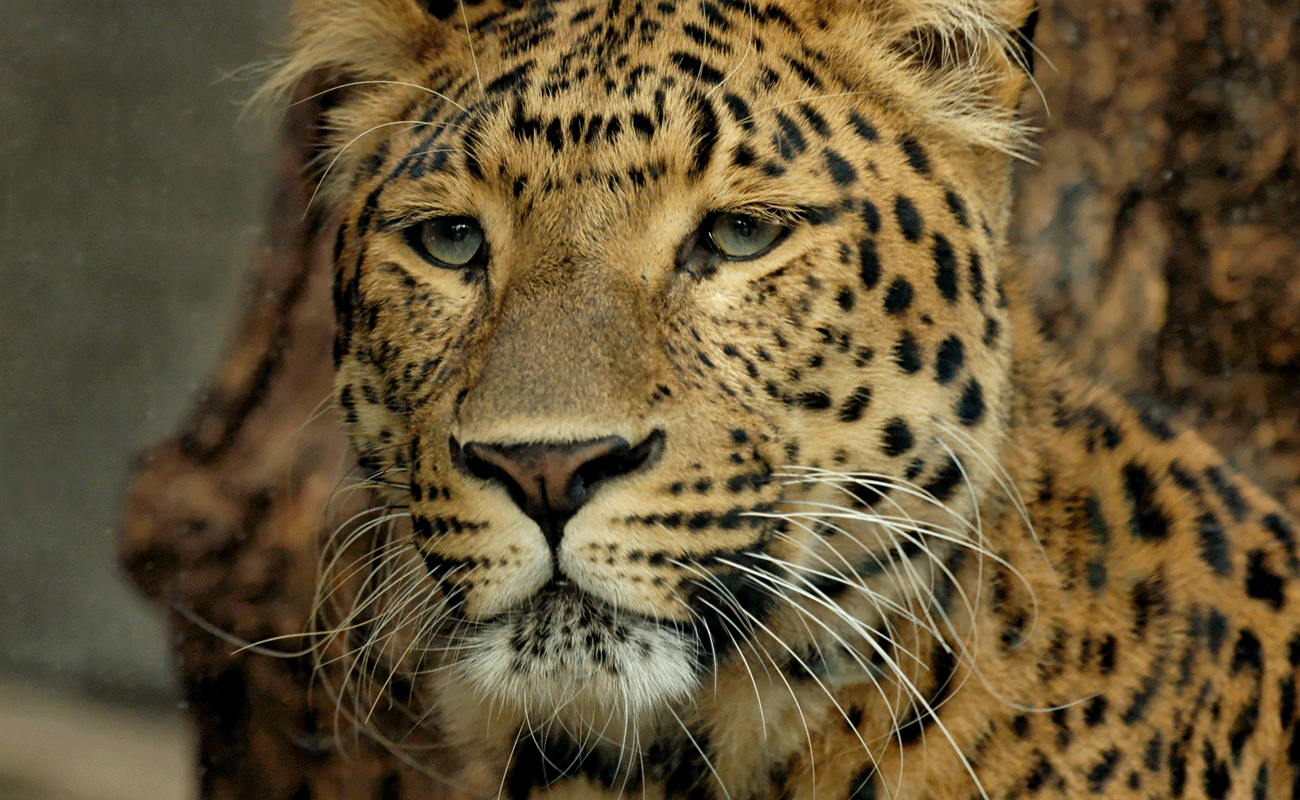
![Validate my RSS feed [Valid RSS]](assets/Uploads/images/NEWS-IMAGES/valid-rss-rogers.png)